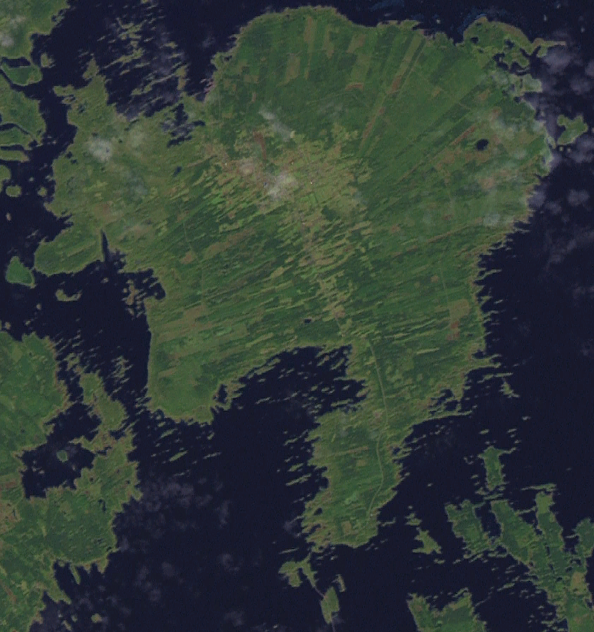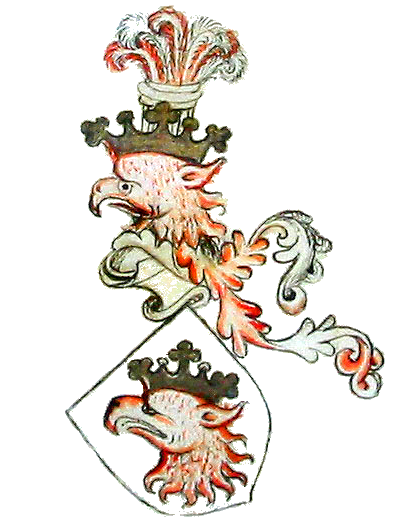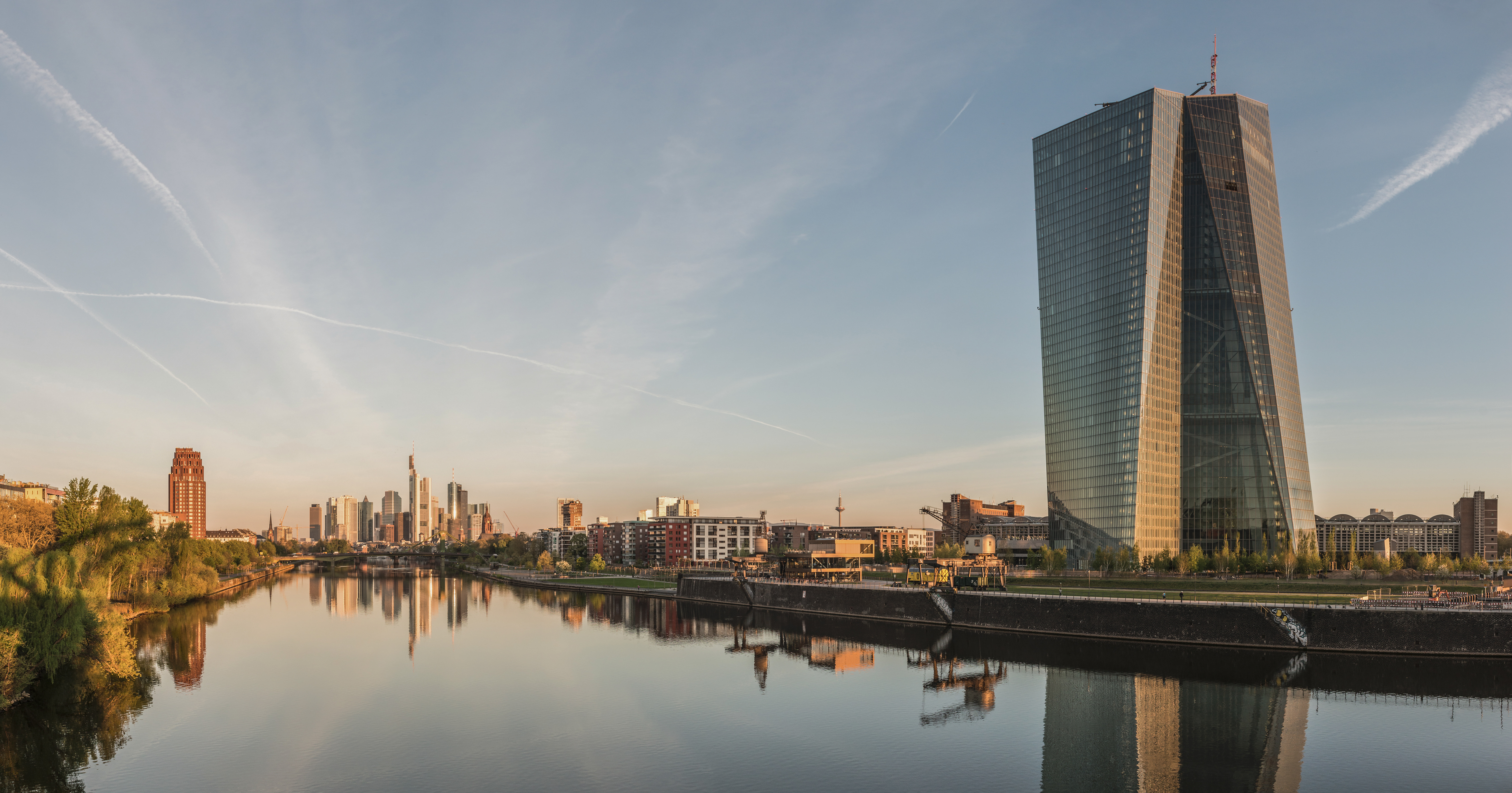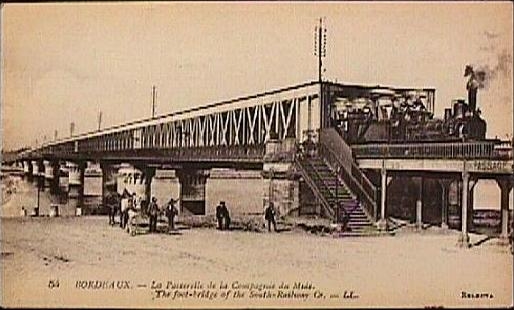|
Kvarken Archipelago
Kvarken ( (as opposed to South Kvarken); ) is the narrow region of the Gulf of Bothnia separating the Bothnian Bay (the inner part of the gulf) from the Bothnian Sea. The distance from the Sweden, Swedish mainland to the Mainland Finland, Finnish mainland is around , while the distance between the outermost islands is only . The water depth in the Kvarken region is only around . The region also has an unusual rate of Post-glacial rebound, land rising at almost a year. Several attempts to cross the strait swimming have been made, but cold water and currents have usually been insurmountable obstacles. The first successful crossing was carried out by Lennart Flygare, Pavio Grzelewski and Tore Klingberg, who on 24 July, 2018, swam from Valassaaret (Valsörarna) on the Finnish side to Holmöarna in Sweden. It took them 12 hours 2 minutes to cross the strait. Kvarken Archipelago On the Finnish side of Kvarken, there is a large archipelago, the Kvarken Archipelago, which includes the ... [...More Info...] [...Related Items...] OR: [Wikipedia] [Google] [Baidu] |
Björkö (Korsholm)
Björkö is an island in Korsholm municipality, Finland. It is situated in the Kvarken area of the Gulf of Bothnia. The chief settlement is called Björköby. In addition to the main island, the Björkö area includes 350 skerry, skerries and its total area is 72 km2. In 1973, the Björköby municipality merged to Korsholm. During the Swedish reign over Finland, the island was notable for being a post transport base in the archipelago on the Finnish side. Mail was ferried by the inhabitants of Björkö to the islands of Holmöarna, Sweden. They got reductions in taxes and exemption from military service for this (strategic) service. Ferry services to the regional capital Vaasa began in 1907 and in 1954, a causeway was built to the major island of the archipelago, Replot, which was connected to the mainland by a car ferry. In 1997, the Replot bridge finally connected also Björkö to the mainland by road. Finnish islands in the Baltic Korsholm Landforms of Ostrobot ... [...More Info...] [...Related Items...] OR: [Wikipedia] [Google] [Baidu] |
Ice Age
An ice age is a long period of reduction in the temperature of Earth's surface and atmosphere, resulting in the presence or expansion of continental and polar ice sheets and alpine glaciers. Earth's climate alternates between ice ages, and greenhouse periods during which there are no glaciers on the planet. Earth is currently in the ice age called Quaternary glaciation. Individual pulses of cold climate within an ice age are termed '' glacial periods'' (''glacials, glaciations, glacial stages, stadials, stades'', or colloquially, ''ice ages''), and intermittent warm periods within an ice age are called '' interglacials'' or ''interstadials''. In glaciology, the term ''ice age'' is defined by the presence of extensive ice sheets in the northern and southern hemispheres. By this definition, the current Holocene epoch is an interglacial period of an ice age. The accumulation of anthropogenic greenhouse gases is projected to delay the next glacial period. History of research ... [...More Info...] [...Related Items...] OR: [Wikipedia] [Google] [Baidu] |
Malmö
Malmö is the List of urban areas in Sweden by population, third-largest city in Sweden, after Stockholm and Gothenburg, and the List of urban areas in the Nordic countries, sixth-largest city in Nordic countries, the Nordic region. Located on the Øresund, Öresund Øresund, strait on the southwestern coast of Sweden, it is the largest city in Scania, with a municipal population of 365,644 in 2024, and is the Governors of Skåne County, gubernatorial seat of Skåne County. Malmö received its city privileges in 1353, and today Metropolitan Malmö, Malmö's metropolitan region is home to over 700,000 people. Malmö is the site of Sweden's only Fixed link, fixed direct link to continental Europe, the Öresund Bridge, completed in 2000. The bridge connects Sweden to Denmark, and carries both road and rail traffic. The Öresund Region, which includes Malmö and Copenhagen, is home to four million people. The city was one of the earliest and most-Industrial Revolution, industri ... [...More Info...] [...Related Items...] OR: [Wikipedia] [Google] [Baidu] |
Copenhagen
Copenhagen ( ) is the capital and most populous city of Denmark, with a population of 1.4 million in the Urban area of Copenhagen, urban area. The city is situated on the islands of Zealand and Amager, separated from Malmö, Sweden, by the Øresund strait. The Øresund Bridge connects the two cities by rail and road. Originally a Vikings, Viking fishing village established in the 10th century in the vicinity of what is now Gammel Strand, Copenhagen became the capital of Denmark in the early 15th century. During the 16th century, the city served as the ''de facto'' capital of the Kalmar Union and the seat of the Union's monarchy, which governed most of the modern-day Nordic countries, Nordic region as part of a Danish confederation with Sweden and Norway. The city flourished as the cultural and economic centre of Scandinavia during the Renaissance. By the 17th century, it had become a regional centre of power, serving as the heart of the Danish government and Military history ... [...More Info...] [...Related Items...] OR: [Wikipedia] [Google] [Baidu] |
Euro
The euro (currency symbol, symbol: euro sign, €; ISO 4217, currency code: EUR) is the official currency of 20 of the Member state of the European Union, member states of the European Union. This group of states is officially known as the euro area or, more commonly, the eurozone. The euro is divided into 100 1 euro cent coin, euro cents. The currency is also used officially by the institutions of the European Union, by International status and usage of the euro, four European microstates that are not EU members, the British Overseas Territory of Akrotiri and Dhekelia, as well as unilaterally by Montenegro and Kosovo. Outside Europe, a number of special territories of EU members also use the euro as their currency. The euro is used by 350 million people in Europe and additionally, over 200 million people worldwide use currencies pegged to the euro. It is the second-largest reserve currency as well as the second-most traded currency in the world after the United Sta ... [...More Info...] [...Related Items...] OR: [Wikipedia] [Google] [Baidu] |
Wasa Line
Wasaline, previously Oy Vaasa-Umeå Ab (1948–1965), Vaasa-Umeå AB (1965–1979), Oy Vaasanlaivat – Vasabåtarna Ab (1979–1991) and Wasa Line (1991–1993) are different names for the Finnish shipping company that ceased trading in 1993 when it merged into Silja Line. Since 2013 the name is being used by a new company that operates between Vaasa (homebase) and Umeå. History In 1948, ''Rederi Ab Vasa-Umeå'' was founded to start passenger traffic across Kvarken, the narrowest part of the Gulf of Bothnia. On 28 May, the company's first ship MS ''Turisten'' made its first journey from Vaasa in Finland to Umeå in Sweden. People living on both sides of Kvarken are predominantly Swedish-speaking, as were the company founders, hence the company originally only had a name in Swedish and ships were named in Swedish. The company's first ships were used steamers, only capable of summer traffic. In 1958, Merivienti Oy, subsidiary of the Finnish forest industry giant Enso-Gutzeit ... [...More Info...] [...Related Items...] OR: [Wikipedia] [Google] [Baidu] |
Vaasa
Vaasa (; , ), formerly (1855-1917) known as Nikolaistad (; ),Vaasa oli ennen Nikolainkaupunki ja Aurinkolahti Mustalahti – paikannimiä ei kuitenkaan pidä muuttaa heppoisin perustein – ''Kaleva (newspaper), Kaleva'' (in Finnish) is a city in Finland and the regional capital of Ostrobothnia (administrative region), Ostrobothnia. It is located on the west coast of the country, on the Gulf of Bothnia. The population of Vaasa is approximately , while the Vaasa sub-region, sub-region has a population of approximately . It is the most populous Municipalities of Finland, municipality in Finland, and the tenth most populous List of urban areas in Finland by population, urban area in the countr ... [...More Info...] [...Related Items...] OR: [Wikipedia] [Google] [Baidu] |
Umeå
Umeå ( , , , locally ; ; ; ; ) is a city in northeast Sweden. It is the seat of Umeå Municipality and the capital of Västerbotten County. Situated on the Ume River, Umeå is the largest Urban areas in Sweden, locality in Norrland and the thirteenth largest in Sweden, with a wider municipal population of 132,235 inhabitants in the beginning of 2023. When Umeå University was established in 1965, growth accelerated, and the amount of housing has doubled in 30 years from 1980 to 2010. , Umeå was gaining around 1,000 inhabitants per year and the municipality plans for having 200,000 inhabitants by 2050. The projection of municipality size in 2050 has, however, been questioned as an overestimation in an independent study. Umeå is a college town, university town and centre of education, technical and medical research in northern Sweden. The two universities located in the city, Umeå University and one of the 3 main branches of Swedish University of Agricultural Sciences, SLU, ... [...More Info...] [...Related Items...] OR: [Wikipedia] [Google] [Baidu] |
Eiffel Tower
The Eiffel Tower ( ; ) is a wrought-iron lattice tower on the Champ de Mars in Paris, France. It is named after the engineer Gustave Eiffel, whose company designed and built the tower from 1887 to 1889. Locally nicknamed "''La dame de fer''" (French for "Iron Lady"), it was constructed as the centrepiece of the Exposition Universelle (1889), 1889 World's Fair, and to crown the centennial anniversary of the French Revolution. Although initially criticised by some of France's leading artists and intellectuals for its design, it has since become a global cultural icon of France and one of the most recognisable structures in the world. The tower received 5,889,000 visitors in 2022. The Eiffel Tower is the most visited monument with an entrance fee in the world: 6.91 million people ascended it in 2015. It was designated a in 1964, and was named part of a UNESCO World Heritage Site ("Paris, Banks of the Seine") in 1991. The tower is tall, about the same height as an 81- ... [...More Info...] [...Related Items...] OR: [Wikipedia] [Google] [Baidu] |
Gustave Eiffel
Alexandre Gustave Eiffel ( , ; Bonickhausen dit Eiffel; 15 December 1832 – 27 December 1923) was a French civil engineer. A graduate of École Centrale des Arts et Manufactures, he made his name with various bridges for the French railway network, most famously the Garabit Viaduct. He is best known for the world-famous Eiffel Tower, designed by his company and built for the Exposition Universelle (1889), 1889 Universal Exposition in Paris, and his contribution to building the Statue of Liberty in New York. After his retirement from engineering, Eiffel focused on research into meteorology and aerodynamics, making significant contributions in both fields. Early life Alexandre Gustave Eiffel was born in France, in the Côte-d'Or, the first child of Catherine-Mélanie (née Moneuse) and Alexandre Bonickhausen dit Eiffel. He was a descendant of Marguerite Frédérique (née Lideriz) and Jean-René Bönickhausen, who had emigrated from the Germany, German town of Marmagen and set ... [...More Info...] [...Related Items...] OR: [Wikipedia] [Google] [Baidu] |
World Heritage Site
World Heritage Sites are landmarks and areas with legal protection under an treaty, international treaty administered by UNESCO for having cultural, historical, or scientific significance. The sites are judged to contain "cultural and natural heritage around the world considered to be of outstanding value to humanity". To be selected, a World Heritage Site is nominated by its host country and determined by the UNESCO's World Heritage Committee to be a unique landmark which is geographically and historically identifiable, having a special cultural or physical significance, and to be under a sufficient system of legal protection. World Heritage Sites might be ancient ruins or historical structures, buildings, cities, deserts, forests, islands, lakes, monuments, mountains or wilderness areas, and others. A World Heritage Site may signify a remarkable accomplishment of humankind and serve as evidence of humanity's intellectual history on the planet, or it might be a place of grea ... [...More Info...] [...Related Items...] OR: [Wikipedia] [Google] [Baidu] |
Fennia (journal)
''Fennia'' is a biannual peer-reviewed open access scientific journal published by the Geographical Society of Finland. It covers all aspects of geography. The journal was established in 1889. The editor-in-chief is Kirsi Pauliina Kallio (University of Tampere). The journal is abstracted and indexed in Scopus (Citescore 2016, 0.67). and the Emerging Sources Citation Index. It is a member of the Free Journal Network. See also *''Danish Journal of Geography'' *''Geografiska Annaler'' *''Norwegian Journal of Geography __NOTOC__ ''Norwegian Journal of Geography'' () is a peer-reviewed scientific journal published by Routledge on behalf of the Norwegian Geographical Society. It covers geographical topics of interest to Norwegian researchers giving equal weight to ...'' References External links * Geography journals Publications established in 1889 Biannual journals English-language journals Academic journals published by learned and professional societies {{geogra ... [...More Info...] [...Related Items...] OR: [Wikipedia] [Google] [Baidu] |







